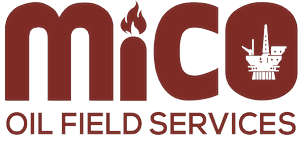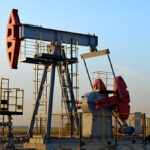Oil spills represent one of the most significant environmental disasters that can occur in the oil and gas industry. The consequences of these spills can be devastating, impacting marine ecosystems, coastal communities, and the economy. Effective crisis management and a swift response are critical to mitigating these impacts. This article explores the best practices for oil spill response and cleanup, examining current methods, innovations, and statistics on their efficacy.
The Impact of Oil Spills
Oil spills have far-reaching consequences, both environmentally and economically. Marine life is particularly vulnerable, as oil can smother fish, seabirds, and other aquatic organisms, causing long-term damage to ecosystems. Additionally, the tourism and fishing industries often suffer massive financial losses in the aftermath of major spills. According to data from the National Oceanic and Atmospheric Administration (NOAA), the BP Deepwater Horizon spill of 2010 released approximately 4.9 million barrels of oil into the Gulf of Mexico, affecting over 68,000 square miles of the ocean surface.

Planning for Oil Spill Response
Effective oil spill response begins long before an incident occurs, with proper planning and preparedness. The development of a detailed Oil Spill Response Plan (OSRP) is a regulatory requirement in many regions, particularly in the U.S., where the Oil Pollution Act of 1990 mandates strict guidelines. This plan outlines the roles and responsibilities of various stakeholders, response strategies, and the resources required for immediate action.
One of the most important aspects of an OSRP is the pre-positioning of response equipment, such as booms, skimmers, and dispersants, near areas of high risk. This ensures that response teams can act quickly, minimizing the spread of oil and the overall damage.
Rapid Containment and Response Techniques for Oil Spills
When an oil spill occurs, containment is the first priority. Containment booms are one of the most common tools used to prevent the spread of oil. These floating barriers are deployed around the spill area, limiting the movement of oil to other regions.
Once the spill is contained, the next step is recovery. Skimmers are devices designed to remove oil from the water’s surface, are used in tandem with containment booms. According to the International Tanker Owners Pollution Federation (ITOPF), mechanical recovery methods, including skimming, typically achieve a recovery rate of about 10-15% of the total spill volume.
In situations where mechanical recovery is not feasible, chemical dispersants may be applied. These substances break down the oil into smaller droplets, promoting its natural biodegradation by microorganisms. The use of dispersants, however, remains controversial due to potential environmental impacts, particularly in sensitive marine habitats.
Innovations in Oil Spills Cleanup
Recent technological advancements are driving improvements in oil spill response. One such innovation is the use of drones and unmanned aerial vehicles (UAVs) to monitor spill sites. These devices provide real-time data on the spread and severity of spills, allowing response teams to adapt their strategies quickly.
Another promising development is the use of bioremediation techniques. This process involves the use of microorganisms that naturally break down hydrocarbons in oil, speeding up the biodegradation process. Research is ongoing into how specific strains of bacteria can be engineered or encouraged to work more efficiently in large-scale cleanup operations.
In addition, companies are exploring the potential of hydrophobic materials that repel water but attract oil. These materials can be used to create oil-absorbing sponges or mats that remove oil from the water without soaking up excess water. This approach, although still in its experimental stages, shows promise in reducing the environmental footprint of spill recovery efforts.
Coordinating Multi-Agency Responses

Effective oil spill response requires coordination among various stakeholders, including government agencies, private companies, non-governmental organizations (NGOs), and local communities. In the U.S., the National Response Framework (NRF) outlines how federal agencies, such as the U.S. Coast Guard, collaborate with state and local responders to manage spills.
The Incident Command System (ICS) is another crucial component in managing large-scale spill response operations. It provides a standardized, flexible approach to incident management, ensuring that responders from different organizations can work together efficiently. This model has been successfully implemented in various spill responses, including the Deepwater Horizon incident.
Post-Spill Restoration and Monitoring
Cleanup efforts do not end once the visible oil has been removed. Long-term environmental monitoring and restoration are necessary to ensure that ecosystems recover fully. Coastal habitats, such as mangroves and wetlands, are particularly vulnerable to oil spills and may require years or even decades to fully recover.
Restoration programs often involve replanting vegetation, rebuilding habitats, and monitoring the health of marine species. In the case of the Deepwater Horizon spill, BP has committed billions of dollars to restoration efforts, which include the restoration of over 130,000 acres of wetlands, beaches, and other habitats.
Discussion
The challenge of managing oil spills is complex, involving rapid response, cutting-edge technology, and coordinated efforts across multiple stakeholders. Significant progress has been made in containment and cleanup technologies, but oil spills are major threat to the environment and economies. Preparedness is the key to successful oil spill management—ensuring that response plans are in place, equipment is readily available effectively. Oil spill cleanup and response services including trainings and guide for best practices by Al Manazel Integrated Co. L.L.C in Oman.










